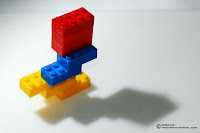In my earlier blog, Misunderstanding the pain, I explained how pain in any part of the body doesn’t mean that only that
part of the body is disturbed. You are just getting indication from the weakest
link.
In this blog I will explain the relation
between physical and physiological body from a unique problem I went through. Apart
from this I got an insight in to how modern medicine and Ayurveda looks at the
same problem.
Previous related blogs
Misunderstanding the pain
One day after an intense Yoga practice I got a severe back pain. This was around a year back and I was ignorantly
testing limits everyday. Pain had become part of my life and I had learnt to live
with the pain. But this time the pain was something unusual. I ignored it for a
day but it started becoming worst. Most of the stretch pain will subside with
sufficient rest but this was increasing (I explained about pains during Yoga
practice in my earlier blog, Yoga teacher pushes...Good or bad?). On day two I
rushed immediately to an allopathic doctor. He said that my muscles have gone
for spasm and I need to take rest for a week. Bed rest is the first few words
modern medicine speaks when they hear back pain. So, next time you visit allopathic
doctor only after taking sufficient bed rest so that you can rule out the
obvious response :)
After two days my problem worsened and on top of that I started developing
severe constipation[1] problems. Slight constipation was there even
before but it was not causing any problem. This time as pain never subsided I
went to an Ayurvedic doctor. Somehow I believe in Ayurveda for treating such
common and chronic problems. Ayurvedic doctor said because of constipation I
have developed back pain. He said when bowel movement becomes difficult it
starts putting extra load on the surrounding muscles which was the cause of
back pain. This was a thought provoking explanation and made me think. I started
analyzing my problem in greater detail.
After much research and self study I understood
the problem. When we overstretch a muscle it causes muscle spasm[2].
Spasm means sudden contraction of
muscle fibers to avoid being overstretched. This is more like a natural defense
mechanism of our body. When back muscles goes for spasm they lose their
flexibility or their rhythm. Back muscle rhythm is important to cause movement
inside your intestine. Back muscle contraction and relaxation which happens
even during walking, running etc creates rhythmic contraction and relaxation in
our intestine. This movement is essential to move food inside our intestine.
When this rhythm is affected it leads to constipation. Constipation will put
load on back muscles which are already compressed due to spasm thus further
increasing the pain. This cycle goes on and pain shoots up exponentially.
Constipation has many causes and what I experienced is one of the causes
which gave me this understanding. This example clearly shows how our physical body
is connected with our physiological functions. When we work on our physical
body in Yoga practice we are working to release tension or contraction in our
muscles which is influencing our physiological organs and its function. Wondering
what I did? I thought of targeting the problem from both sides and I took both
medicine :)
In my future blogs I would logically explain how Yoga practice will
influence you at a much deeper levels such as mental, intellectual and
energetic. I hope you enjoyed reading it.
If you find it useful, please help me
share the blog and spread the message.
References
[1] http://www.webmd.com/digestive-disorders/digestive-diseases-constipation
[2] http://en.wikipedia.org/wiki/Spasm
[2] http://en.wikipedia.org/wiki/Spasm
Misunderstanding the pain





































